If you want tomato plants to grow optimally, it is necessary to take good care of them and provide all the necessary nutrients. How do I use Epsom salt for my tomatoes? Many gardeners often ask this question. In this blog, we will explore the subject by looking at how often Epsom salt is used and some methods for applying Epsom salt to tomatoes. Epsom salt has a lot of advantages, which we shall go through in detail. We will also know the signs when magnesium is less in the body system and how best you can correct the situation on your farm by using the right doses. This guide provides information on using Epsom Salt to Care for Your Tomato Plant, regardless of your level of experience with gardening.
Understanding the Benefits of Epsom Salt for Tomato Plants
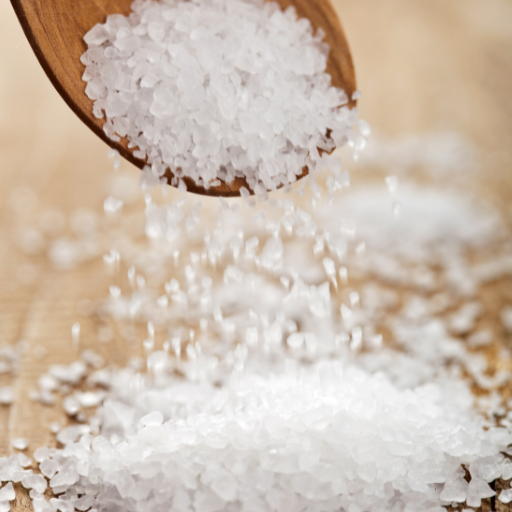
Tomato plants must be fed Epsom salt, chemically known as magnesium sulphate. An important nutrient for photosynthesis helps the tomato plant convert sunlight into energy efficiently. It also enhances the strength of roots and helps in absorption of nutrients. This interveinal chlorosis can be treated by addition of Epsom salt due to magnesium deficiency, which is usually indicated by yellow leaves with green veins. Additionally, its regular use in prescribed amounts per acre improves fruit set, taste complexity and yield.
Why Tomato Plants Need Magnesium
Magnesium is a key macronutrient that must be present in sufficient quantities for tomato plants because it forms part of the chlorophyll molecule essential for photosynthesis. This process of converting light energy into chemical energy further results to growth and development happening well. In tomato plants, technical parameters determining magnesium requirement range from 100 ppm to 200 ppm (parts-per-million) depending on soil type and nutrient status. By providing enough magnesium, one can prevent interveinal chlorosis, especially on old leaves, and help create carbohydrates and amino acids that enhance the good health of a plant. Also, it aids in uptake of other nutrients required for proper balance growth and optimum fruit set in quantity.
Role of Sulfur in Tomato Plant Health
Sulfur is described as an indispensable nutrient critical to various biochemical activities or physiological processes involving tomato plants. It contributes to making up important building blocks of proteins like cysteine and methionine, responsible for producing essential amino acids. Moreover, sulfur comes into play during synthesis processes concerning vitamins, hence assisting enzymes supporting metabolism or growth functions within plants, including those found among tomatoes, particularly if any deficiency leads to stunted growth or yellowing leaves affecting chlorophyll production processes.
As per technical parameters relating to sulfur needs among tomatoes, concentration levels should be at around 20-40 ppm (parts per million) in the soil. Staying within this range of sulfur levels guarantees optimum enzyme activity and, thus, proteins required for increased nutrient acquisition and utilization. The absorption and assimilation of nitrogen into tissues of plants are supported by sulfur, which, together with nitrogen fixation, leads to high yields. Periodic soil analysis can help monitor sulphur levels, hence helping to guide appropriate supplementation to maintain plant health and productivity.
Enhancing Fruit Production with Epsom Salt
Epsom salt is known as magnesium sulfate scientifically because it is a common application to increase fruit production in tomato plants. Its active ingredients, magnesium and sulfur, are crucial in numerous physiological processes. Magnesium is necessary for the creating of chlorophyll in such species that promotes photosynthesis efficiency leading to healthy plants generally. Conversely, sulfur supports protein synthesis and enzymatic reactions directly affecting nutrient uptake and growth dynamics of tomatoes themselves where since no more than enough will mean retarded vegetative growth due to disturbed chlorophyll synthesis.
The methods of application of Epsom salt in tomato cultivation include soil amendment and foliar feeding. Soil modification entails adding one tablespoon of Epsom salt for every foot in plant height by blending it with the soil. This is done by spraying a solution of two tablespoons of Epsom salt dissolved in a gallon of water directly onto leaves every fourteen days. It is applied in two different ways to ensure that tomato plants have adequate magnesium and sulfur supplies for stronger growth, better nutrient uptake, and more fruits made. The recommended practice for maintaining optimum health includes regular tests for nutrients on both foliage as well as soils to avoid over-feeding the crop.
Recommended Frequency for Epsom Salt Application
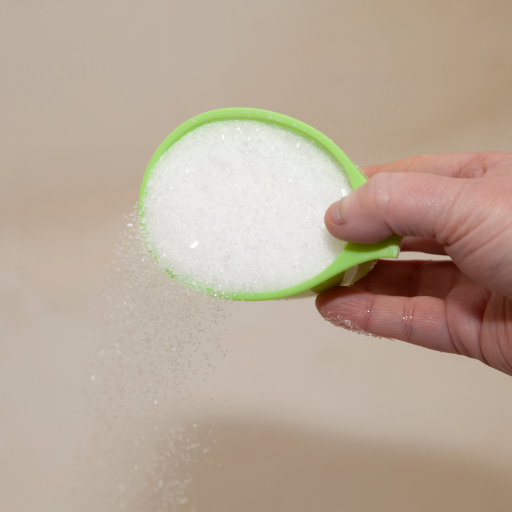
Even as this depends on the specific needs of tomato plants and soil conditions, it is generally recommended that Epsom salt be used once every month throughout the growing season. When planting, incorporate one tablespoon of Epsom salt per foot of plant height into the soil and repeat monthly till you reach the ideal concentration. Foliar applications can be done by spraying a solution of two tablespoons of Epsom salt in a gallon of water on leaves every other week. Consistent application should however go hand in hand with regular testing since excesses may result to imbalances and potential plant damage.
Weekly vs. Bi-weekly Application: What’s Best?
In these cases, both weekly and bi-weekly frequencies for applying Epsom salt have advantages. Bi-weekly applications can help maintain a balanced nutrient profile for tomatoes, ensuring that they receive enough magnesium and sulfur on a regular basis without risking buildup. As such, twice-monthly application periods are useful for stabilizing growth rates, improving nutrient uptake, and providing better products.
Alternatively, weekly applications might have to be applied if plants depict symptoms of magnesium deficiency including yellow leaves or reduced vigor among others. Too many fertilizers are usually poured into some root systems leading to dieback and other manifestations of inadequate nutrition (Lester et al., 2012). However, over-application must be avoided at all times; hence, close monitoring is necessary to prevent nutrient lockout or toxicity situations.
The approach to use will depend on what suits your particular plants best alongside what is already contained in the soil nutrient content. This means that there has to be regular testing which acts as an eye opener for adjusting how often epsom salts should be applied.
Seasonal Adjustments: When to Apply More or Less
As tomato plants grow during early seasons, they require higher levels of magnesium which supports vigorous growth and helps establish strong roots. On this note, it is logical that Epsom salt be applied more often during this time, perhaps weekly if soil tests warrant such action. In the warm summer months, application frequency is lowered to once every two weeks so that nutrient delivery remains balanced without overloading the soil’s capacity. It may also be appropriate to reduce Epsom salt applications further as plants reach late summer and early fall when they begin winding down their growth cycle and concentrate on fruiting. Here, it is important that the plants are not stressed out by unnecessary injection of nutrients, but instead small amounts of these substances are devoted to generating fruits (Lester et al., 2012). Throughout these seasonal changes, continuous monitoring and soil testing is necessary in order to fine tune the application strategy for optimal plant health and productivity.
Signs of When It’s time to Reapply
Several signs can identify magnesium deficiency in tomato plants. The most important symptom is interveinal chlorosis, localized between the veins on leaves that become yellow while the veins remain green. This usually begins with older leaves and can continue if not corrected for. Another indication would be stunted growth and reduced general vigor of the plant since magnesium is involved in chlorophyll synthesis and energy transfer within the plant. Furthermore, there might be poor fruit development and low yields; smaller, less tasty fruits may occur. Regular soil testing can give quantitative data on magnesium levels, with further leaf tissue analysis confirming deficiencies as well. Whenever these symptoms manifest themselves it might imply that it’s time to think about other ways to supply some Epsom salt to ensure normal magnesium levels in the plants’ bodies. This should be consistent with soil test results to avoid over-application and possible nutrient imbalance.
Methods of Applying Epsom Salt to Tomato Plants
Epsom salt has numerous applications for tomato plants. One way is by using it as a foliar spray, where one tablespoon of the salt is mixed with one gallon of water and sprayed on a number of leaves every two weeks, whereby there is fast absorption through the leaves. Another method involves adding Epsom salt to soil at planting by applying one tablespoon in the planting hole or scattering around the base of already established plants. In addition, you can water them using a mixture made from dissolving one tablespoon Epsom salt in a gallon of water every month.
Each method has advantages and can be tailored to specific plant needs, soil conditions, and the gardener’s preference. Regularly monitoring and adjusting the frequency of applications can help maintain optimal magnesium levels and enhance plant health and productivity.
Foliar Spray: How and When to Use It
Foliar sprays are useful in addressing magnessium deficiencies quickly in tomato plants. Dissolve a tablespoon of Epsom salt into 1 gallon water; that gives enough magnisum without risking leaf burn or nutrient imbalances. The solution should then be applied to the leaves thoroughly with a sprayer so that even their undersides are covered for maximum absorption since stomata are found there.
Apply early morning or late evening when temperatures are cool, avoiding midday heat, which may cause rapid evaporation, hence low absorption rates. Usually bi-weekly treatments suffice but their frequency may depend on observed plant well-being as well as soil test results obtained previously. Observing lush growth and deep green coloration on leaves indicates the success of the treatment process.Watch out if nothing changes after several application attempts; rather get your soils tested alongside tissue tests concerning magnesium content lest other factors limit your plant’s wellness.
Soil Drench: Effective Techniques and Ratios
When preparing this drenching solution mix 1-2 tablespoons fulls of Epsom salts with about a gallon of water. This concentration will provide a good dose of magnesium that can be absorbed by the roots and not cause any nutrient imbalances. Prior to applying the drench, water your plants adequately so that soil moisture can facilitate spreading and uptake of magnesium solution in the soil. Pour the solution evenly around the base of the plant taking care to target the root zone steadily and slowly to prevent runoff.
Depending on specific magnesium requirements for tomato plants and also soil conditions typical application frequency for drenching could be monthly or with intervals as long as six weeks. Monitoring soils on regular basis through soil test will inform you if application concentration needs a change alongside frequency so as to ensure optimum plant health. If treatments are effective, we expect to see strong root systems and healthy foliage; however, when persistent deficits occur, it is necessary to either cut back on dose rates or investigate additional fertility approaches, which might include complementary nutrients being supplied into your system.
Combining Foliar and Soil Applications for Optimal Results
Combining foliar and soil applications are very good ways of making the magnesium delivered to the tomato plant efficient. It has been shown that this approach tackles both immediate and future nutrient specifications. Unlike soil application, which ensures a sustained availability of nutrients enhancing overall root health and function, foliar sprays offer an instant source of magnesium directly into leaf tissues leading to faster relief from symptoms.
Research-based criteria for effective foliar applications recommend using a 1-2% Epsom salt solution (approximately 20 grams of Epsom salt per liter of water). To reduce evaporation and maximize leaf uptake, it is best to spray in the early morning or late evening. To keep leaves with enough magnesium between this interval, foliar spraying should be done every two or three weeks.
For the same reason, monthly soil applications should be done using prepared drenches containing one tablespoonful of Epsom salts per gallon of water. Adopting both approaches while considering particular crop needs and environmental factors guarantees complete nutrient management. Regular soil testing, tissue analysis, and physical inspections will help determine when adjustments in method, concentration, or frequency are necessary. This combination leads to the uptake of the most well-suited amount of magnesium, resulting in strong, healthy tomato plants.
Monitoring Tomato Plants for Epsom Salt Effectiveness
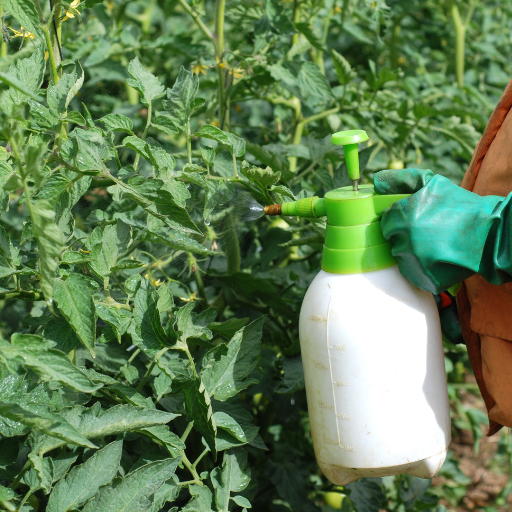
For tomato plants to be more effective in absorbing magnesium, they have to be evaluated visually and through scientific analysis. In the first place, this can be demonstrated through visible improvements in the appearance of the plants. The leaves of a healthy tomato plant will look fresh green and show signs of better growth overall. Moreover, successful treatment can also be proved by looking out for abatement symptoms for magnesium deficiency such as yellowing of leaves and interveinal chlorosis. Besides just visual assessment, periodic soil and tissue tests give accurate information about nutrient levels. They help to calculate how much magnesium there is in the soil so as to ensure that it falls within the required range. These observational and analytical methods combined offer a strong basis for judging whether Epsom salt applications are working properly or not concerning adjusting care if necessary.
Signs of Healthy Growth
Healthy growth indicators in tomato plants are essentially characterized by strong foliage that is full of life. Leaves must remain deep green without any yellowing or browning indicating sufficient Mg levels. Furthermore, another important indicator would include flower and fruit production; healthy plants would produce flowers at an even rate and grow firm tomatoes that are about perfect size. Additionally, good stem strength alongside root system development becomes essential; robust stems plus well-established roots signify that all nutrients required by a plant for continuous growth have been adequately provided . Pest- and disease-free condition also confirms the health status of the plant, exposing how effective the nutrients used were on it when growing, recovering better again over regular time frames that could be withered off due to various factors like excessive rainfall or inadequate sunshine requiring one to make timely adjustments aimed at avoiding imbalances.
Regular monitoring allows us to identify any deviations early enough to take corrective action promptly while maintaining optimum plant health.
Overcoming Continued Deficiency Despite Regular Application
Even though one applies Epsom salt regularly on their tomato plants, they may still experience problems associated with lack of magnesium because of different factors that affect nutrient uptake and soil chemistry. For instance, continued yellowing of leaves especially older ones and interveinal chlorosis are signs that magnesium deficiency still persists.
- Soil pH Imbalance: The optimal pH range for proper Mg uptake is 6.0-6.5. Magnesium absorption will be impeded if the soil pH is too acidic (less than 6.0) or too alkaline (greater than 7.0). Investigating the pH level will help identify problem areas, which can be corrected with the application of lime in case of acidity or sulfur when it’s alkalinized.
- Competing Cations: High levels of competing cations such as calcium (Ca) and potassium (K) can hinder Mg uptake by plants. It is important to balance them against each other to avoid competitive inhibition. These rates could be determined through the recommended soil tests and even more adjustments while ensuring the Ca:Mg ratio remains between 3 and 5:1.
- Soil Moisture and Drainage: Excessive moisture availability in soils or poor drainage could promote leaching away of Mg from root zone.. Well-draining soils or raised beds may enhance moisture control, hence the availability of Mg for plants’ roots .
Persistent deficiency symptoms need regular monitoring with adaptation guided by specific environmental conditions and soil analysis, all aimed at effective nutrient management beneficial for optimum plant health.
Modification based on Plant Response
Considering plant response to Epsom salt application, appropriate dosage adjustment should take into account following symptoms shown by plants as well as periodic soil testing to guide exact measurements.
- Initial Dosage: Apply an initial dose of 1 tbsp Epsom salt per ft height above ground level mixed with water as drench to ensure even distribution through out the crop stand after which basal dressing could be applied.
- Observation Period: The plants should be observed for 7-10 days to see if they improve in their leaves’ color and overall vigor. If the situation improves, then it means that the dose is right.
- Dosage Adjustment: In case of absence of any change, the quantity should slowly be increased by one spoonful per application with a maximum total not more than four table spoons per plant monthly to avoid over-fertilization.
- Soil Testing: Soil tests performed every month or two will help determine current magnesium levels and allow precise adjustments of Epsom salt treatments; optimal soil magnesium levels for healthy plants are between 150 and 250 ppm (parts per million).
- Foliar Application: Alternatively, foliar spraying using one gallon water mixed with tablespoons of Epsom salt can also work. This method allows quicker plant uptake and can also act as root application, particularly where there is an acute deficiency.
The dosage may be adjusted according to the needs of the tomatoes and if some signs are regularly followed such as using registered pesticides and correct timing for sprinkler irrigation, for example, when the wind speed is less than three miles per hour, the rate at which fertilizer is applied and way it is spread out on the ground so that there could be no overlapping
Potential Risks and How to Avoid Overuse
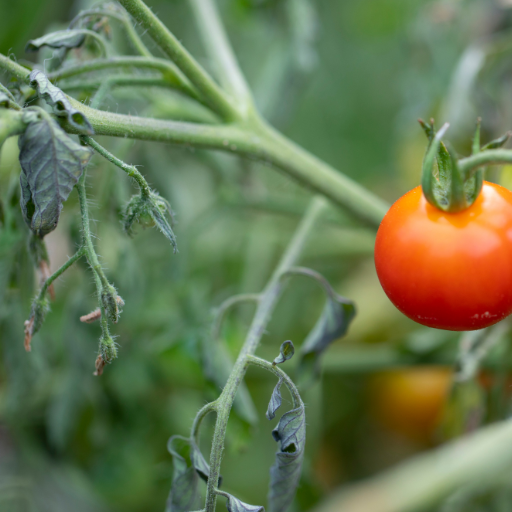
It is important to note that while Epsom salt can be beneficial for plants, if not properly handled, it may cause problems. A high concentration of magnesium in the soil due to excessive use of Epsom salts can make other essential nutrients, such as calcium and potassium, unavailable to plants, leading to nutrient imbalances. As a result, the plants will show symptoms like yellow leaves, poor fruiting and general dullness. To avoid these negative effects, respecting the recommended dose rate and applying only when necessary is important. This problem can be avoided by regularly testing the soil for magnesium levels and testing plant health so as to reduce instances of over-fertilizing. If these signs are noticed, flushing the soil with plenty of water may help remove excess salts and restore balance. The risk is also mitigated by using Epsom salt as part of an overall fertilization strategy instead of depending on it solely.
Symptoms of Overuse in Tomato Plants
Several signs indicate overuse when it comes to tomato plants. One symptom that stands out among others is when the leaves turn yellow especially between veins; this yellowing refers to interveinal chlorosis which normally occurs because the plant has too much magnesium relative to calcium in it. Another sign will be poor fruit development or blossom end rot where you find dark sunken areas at the bottom side of tomato fruits.The condition leads due to an imbalance in nutrient uptake caused by excessive magnesium affecting calcium which is vital for fruit integrity.Also,stunted growth and generally reduced vigor denotes poor absorption of necessary nutrients due to excessive magnesium levels in soils.A comprehensive approach involves conducting soil tests on varying concentrations.
Balancing Epsom Salt with Other Nutrients
In order for one to have balanced application with other nutrients,one should know exactly what your crop needs in terms of nutrition.Magnesium sulfate, commonly referred to as Epsom salt, should be used alongside macronutrients such as nitrogen,phosphorous, and potassium, and secondary nutrients like calcium and sulfur. When magnesium is deficient and an excess of calcium, it results in nutrient lockout which means that the plant can not efficiently take up essential nutrients.Integrating Epsom salt into a broader fertilization regime that includes regular soil testing can help ensure that the nutrient profile remains balanced.Also,it’s advisable to switch between adding Epsom salts with other fertilizers to mitigate the chances of excessive application.This will promote healthy plant development leading to higher yields.
Soil Testing: Ensuring Optimal Nutrient Levels
Soil testing is the process by which one evaluates his/her soil health and nutrient status, directly influencing plant growth and productivity. Soil analysis determines the levels of essential macro-nutrients such as Nitrogen, Phosphorus, Potassium, Calcium, Magnesium, Sulphur, etc., making it possible for precise adjustments in terms of fertilizer applications to rectify any imbalance or deficiency.Soil pH is also measured so that plants’ ability to access nutrients is considered too.Regular soil testing ensures informed applications of nutrients thus improving crop growth rates while minimizing instances of over-fertilization thereby reducing environmental contamination.
Integrating Epsom Salt into a Comprehensive Care Plan
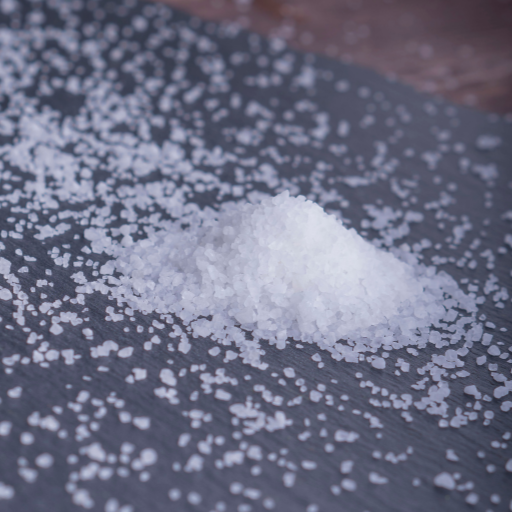
The comprehensive plant care plan requires one to know how this Epsom salt, as a magnesium sulfate supplement, plays a role and relates to the overall nutrient profile of the soil. Epsom salt can be applied as foliar spray or root drench other than soil amendment. For soil amendment add one or two tablespoons per gallon water and apply around plants base once per month. On the other hand, for foliar application mix one tablespoon with a gallon of water and spray directly on leaves twice in two weeks. To keep equilibrium is very important that regular soil testing should be done to monitor nutrient levels so as to prevent any imbalances that might result from excessive amounts of magnesium. They must be carefully integrated into other sulphur or magnesium sources and see the entire health condition of a ground that gives plants an all-rounded nutrition which allows them grow robustly and diminishes risk of diseases.
Complementary Fertilizers for Tomato Plants
Several fertilizers can be combined with Epsom salt which significantly boost productivity and growth rate of tomato plants. Nitrogen-rich fertilizers like blood meal or fish emulsion stimulate vigorous leaf growth and stem elongation, which is essential during the early stages of plant development. Phosphorus based fertilizers such as bone mean or rock phosphate are essential for root development as well as setting flowers and fruiting. In addition, potassium-rich fertilizers, including potassium sulfate and kelp meal, promote fruit formation plus healthy overall plant status. A balanced slow-release fertilizer will ensure tomatoes obtain all necessary nutrients in their diet throughout different stages of plant growth hence providing a complete nutrient profile specifically tailored towards each stage.
Watering Schedules & Their Effects on Nutrient Uptake
Watering schedules play an important role in optimizing nutrient uptake by tomato plants too . The frequency and amount of water provided determine the solubility and availability of nutrients within it . Over-watering results in the leaching of nutrients from the root zone, hence causing the loss of important minerals in plants. Conversely, under-watering can cause nutrient imbalances by limiting the dissolution and mobility of nutrients in the soil. A constant watering regime within optimum soil water content range ensures that there is sufficient dissolution of nutrients which are available for uptake by roots. Techniques like mulching may assist in retaining soil moisture and reduce evaporation thus, making more nutrients available to plants. Depending on environmental conditions, tomatoes normally require deep water application once or twice a week to reach deeper root zones thus encouraging stronger root development through efficient nutrient absorption. An equilibrium between supply rates and weather conditions should be maintained as per developmental stages of tomato plants to ensure healthy productivity.
Reference sources
Frequently Asked Questions (FAQs)
Q: How often should I use epsom salt on my tomato plants?
A: You should add epsom salt to the soil for tomato plants every two weeks to help tomatoes thrive. This regular application ensures they get the necessary magnesium and sulfur for healthy growth.
Q: Can using epsom salt help my tomato plants if they have a magnesium deficiency?
A: Yes, adding epsom salt to the soil can help address a magnesium deficiency in tomato plants. Magnesium, one of the components of epsom salt, is essential for plant health and aids in the production of chlorophyll.
Q: How do I properly add epsom salt to my vegetable garden?
A: To add epsom salt to your vegetable garden, you can either sprinkle it on the soil around the base of your plant or dilute it in water and use a spray bottle or tank sprayer to apply it directly to plant leaves.
Q: Is it harmful to plants if I use too much epsom salt?
A: Yes, using too much epsom salt can be harmful to plants. Overuse can lead to an imbalance of minerals in the soil and negatively affect plant health, so it’s important to stick to recommended amounts.
Q: How much epsom salt should I add to the soil for my tomato plants?
A: You should add one or two tablespoons of epsom salt per foot of plant height around the base of each tomato plant. This ensures an adequate supply of magnesium and sulfur.
Q: Can epsom salt help with seed germination in a vegetable garden?
A: Yes, epsom salt helps with seed germination by enhancing the uptake of essential nutrients. It’s also good for improving the overall vigor of seedlings.
Q: Should I add epsom salt to both tomato and pepper plants in my garden?
A: Yes, you can add epsom salt to both tomato and pepper plants. It helps improve plant cell walls and enhances nutrient absorption, contributing to healthier tomato and pepper plants.
Q: Does epsom salt have any benefits when added to compost?
A: Adding epsom salt to compost can help enrich the nutrient content, making your compost more beneficial for your garden. Epsom salt is a natural mineral that enhances soil quality.
Q: Is epsom salt really necessary for my tomato plants, or can they thrive without it?
A: While tomato plants can survive without epsom salt, using it can significantly enhance their growth and yield. Epsom salt is beneficial because it provides magnesium and sulfur, which are crucial for plant health. It’s also good for preventing deficiencies that can impede growth.






